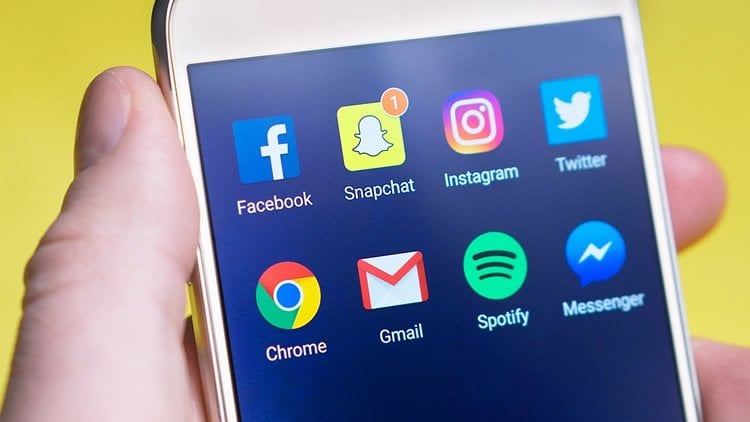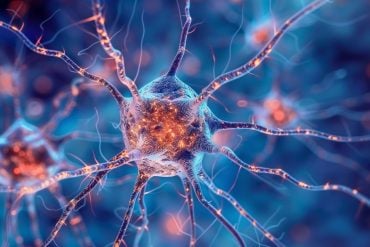Summary: Researchers report social media interactions can help reduce negative emotions and restore a sense of well-being.
Source: Society for Consumer Psychology.
Have you ever wanted to tell someone about a tough day at work or scary medical news, but felt nervous about calling a friend to share what’s going on?
Findings from a new study suggest that people who feel apprehensive about one-on-one interactions are taking advantage of a new form of communication that may help regulate emotions during times of need: online social networks. The study is available online in the Journal of Consumer Psychology.
“When people feel badly, they have a need to reach out to others because this can help reduce negative emotions and restore a sense of well-being,” says Eva Buechel, a professor in the business school at the University of South Carolina. “But talking to someone face-to-face or on the phone might feel daunting because people may worry that they are bothering them. Sharing a status update on Facebook or tweet on Twitter allows people to reach out to a large audience in a more undirected manner.”
Sharing short messages to an audience on a social network, called microblogging, allows people to reach out without imposing unwanted communication on someone who might feel obligated to respond. Responses on online social networks are more voluntary. To test whether people are more likely to microblog when they feel socially apprehensive, Buechel asked participants in one group to write about a time when they had no one to talk to at a party, while the control group wrote about office products.
Then she asked the participants who had an online social network account to log in and spend two minutes on their preferred social network. When the time ended, she asked people if they had microblogged. The results showed that those who had been led to feel socially apprehensive were more likely to microblog.
To explore who is more likely to microblog, Buechel conducted another experiment in which one group of participants watched a clip from the movie “Silence of the Lambs,” while the control group watched clips of pictures from space. Then they answered questions about how likely they were to express themselves in three different forms of communication: microblogging, in person or direct message (a private online message to an individual). Finally, she asked people to answer a series of questions that measured their level of social anxiety in a variety of situations.

Buechel discovered that people who were higher on the social apprehension scale were more likely to microblog after they had experienced negative emotions (as a result of watching the “Silence of The Lambs” clip). People who were low on the social apprehension scale, however, were more interested in sharing face-to-face or via direct message after watching the scary clip.
“There is a lot of research showing that sharing online is less ideal than having communication in person, but these social networks could be an important communication channel for certain individuals who would otherwise stay isolated,” she says.
She acknowledges that there is a danger for those who start to rely on social media as their only form of communication, but when used wisely, microblogging can be a valuable means of buffering negative emotions though social interaction.
Source: Heather Stringer – Society for Consumer Psychology
Publisher: Organized by NeuroscienceNews.com.
Image Source: NeuroscienceNews.com image is in the public domain.
Original Research: Abstract for “Microblogging and the Value of Undirected Communication” by Eva C. Buechel, and Jonah Berger in Schizophrenia Research. Published online October 30 2017 doi:10.1002/jcpy.1013
[cbtabs][cbtab title=”MLA”]Society for Consumer Psychology “How Social Networking Keeps People Healthy.” NeuroscienceNews. NeuroscienceNews, 11 December 2017.
<https://neurosciencenews.com/social-media-health-8166/>.[/cbtab][cbtab title=”APA”]Society for Consumer Psychology (2017, December 11). How Social Networking Keeps People Healthy. NeuroscienceNews. Retrieved December 11, 2017 from https://neurosciencenews.com/social-media-health-8166/[/cbtab][cbtab title=”Chicago”]Society for Consumer Psychology “How Social Networking Keeps People Healthy.” https://neurosciencenews.com/social-media-health-8166/ (accessed December 11, 2017).[/cbtab][/cbtabs]
Abstract
Microblogging and the Value of Undirected Communication
Online social networks have become extremely popular, but what drives sharing through these channels? We demonstrate that one of the most popular features of online social networks, microblogging (e.g., tweeting or sharing Facebook status updates), is driven in part by its undirected nature. Microblogging allows people to simultaneously express themselves to a large number of potential communication partners without having to address anyone in particular. As a result, this communication channel is particularly valued when people feel socially apprehensive; it allows them to reach out without having to bother others by imposing unwanted communication on any specific individual. These findings shed light on one reason why people use online social networks and provide insight into the value of undirected communication.
“Microblogging and the Value of Undirected Communication” by Eva C. Buechel, and Jonah Berger in Schizophrenia Research. Published online October 30 2017 doi:10.1002/jcpy.1013






